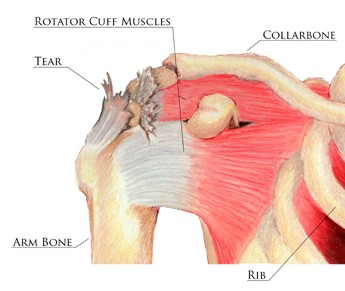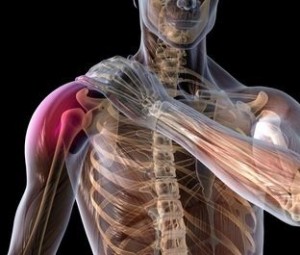Physio Health Advice > Rotator Cuff Tears
What is the Rotator Cuff?
The rotator cuff refers to four small muscles in the shoulder joint that connect the shoulder blade to the upper arm. They stabilize the shoulder joint, keeping the joint where it is and also act to rotate the shoulder inwards and outwards.
The muscles attach at different points around the shoulder blade and attach as four tendons into the top of the humerus (upper arm bone).
How do they tear?
These tendons are commonly injured through a fall onto an outstretched arm. However, they can tear from seemingly harmless movements of the arm repeated over a long period of time if the tendons are weakened. This is often referred to as ‘repeated microtrauma’. Tears occur most commonly at the point where the muscle turns into tendon, called the musculotendinous junction.
What does it mean if I tear my Rotator Cuff?
What to expect after a rotator cuff tear depends on how bad the tear is. It is possible to tear the tendon completely in two, which usually requires a surgical repair and subsequent rehabilitation. Partial tears can heal with physiotherapy rehabilitation and the length of time required will depend on the severity of the tear.
Unfortunately, while many rotator cuff tears are resolving and healing, secondary complications begin to occur. The shoulder girdle is a very complex and flexible part of the body and as such is quite vulnerable to pain caused by poor movement patterns
Many people move differently when they have pain. They might tend to elevate the shoulder blade, move their neck less to that side or simply move that arm less.
A common condition associated with rotator cuff tears is shoulder impingement, which is where, due to poor muscle control, structures within the shoulder joint are compressed and irritated as the arm is moved.
Can Physiotherapy help?
Physiotherapy is an important part of the rehabilitation process of rotator cuff tears, both surgically and naturally repaired. Your physiotherapist will help to prevent secondary neck and shoulder problems and give you a strengthening program to restore you to your previous function. For the best outcomes it’s important to seek treatment as soon as possible and get started on your rehabilitation program.



